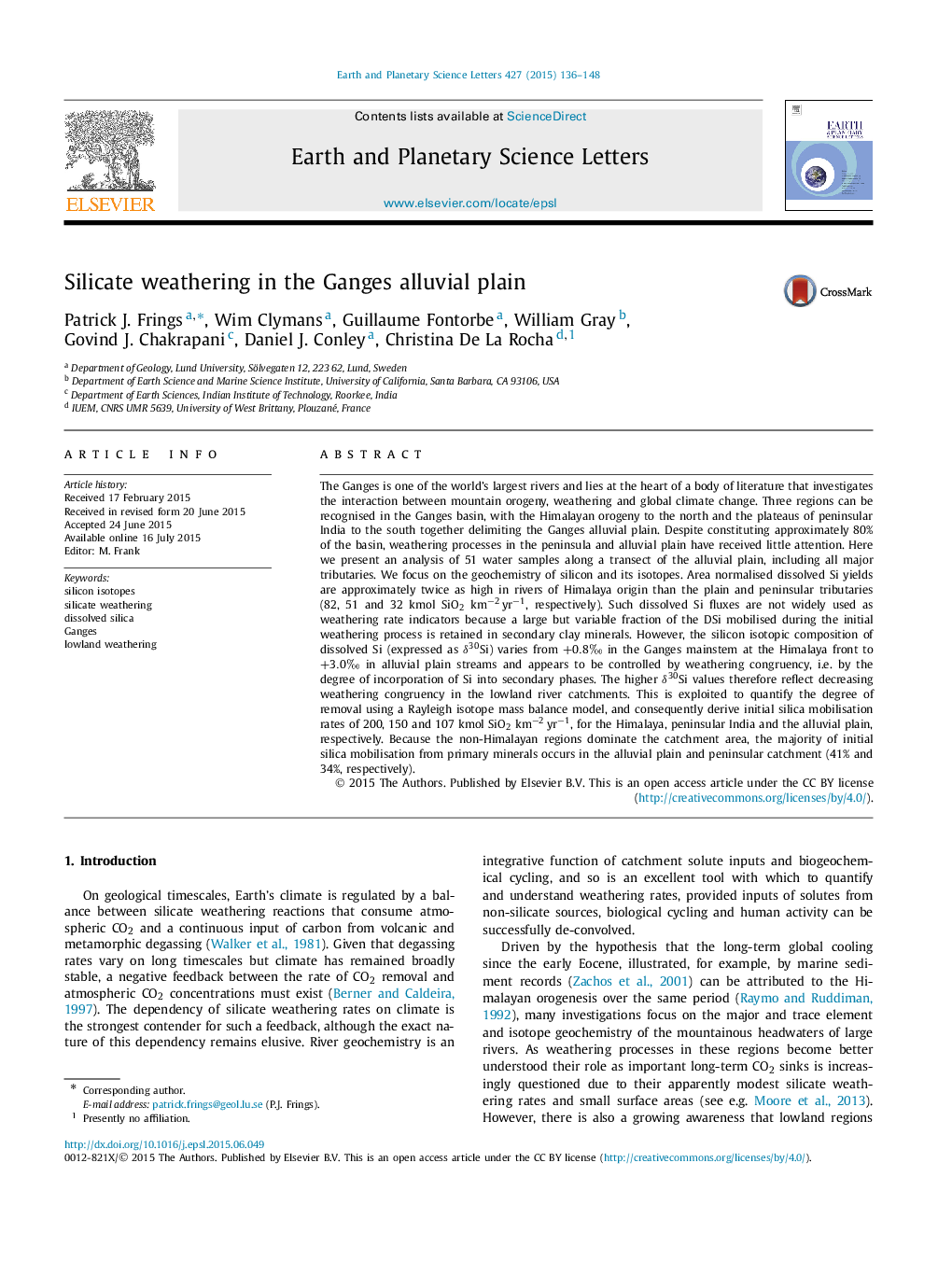| کد مقاله | کد نشریه | سال انتشار | مقاله انگلیسی | نسخه تمام متن |
|---|---|---|---|---|
| 6428076 | 1634729 | 2015 | 13 صفحه PDF | دانلود رایگان |
- New data is presented for δ30Si of dissolved Si (DSi) from 50 sites in Ganges basin.
- δ30Si reflects incorporation of Si in secondary phases, i.e. weathering congruency.
- Himalayan rivers have DSi yields 2Ã non-Himalayan catchments, and more congruent.
- Majority of initial Si mobilisation in Ganges basin occurs in lowland regions.
The Ganges is one of the world's largest rivers and lies at the heart of a body of literature that investigates the interaction between mountain orogeny, weathering and global climate change. Three regions can be recognised in the Ganges basin, with the Himalayan orogeny to the north and the plateaus of peninsular India to the south together delimiting the Ganges alluvial plain. Despite constituting approximately 80% of the basin, weathering processes in the peninsula and alluvial plain have received little attention. Here we present an analysis of 51 water samples along a transect of the alluvial plain, including all major tributaries. We focus on the geochemistry of silicon and its isotopes. Area normalised dissolved Si yields are approximately twice as high in rivers of Himalaya origin than the plain and peninsular tributaries (82, 51 and 32 kmol SiO2 kmâ2âyrâ1, respectively). Such dissolved Si fluxes are not widely used as weathering rate indicators because a large but variable fraction of the DSi mobilised during the initial weathering process is retained in secondary clay minerals. However, the silicon isotopic composition of dissolved Si (expressed as δ30Si) varies from +0.8â° in the Ganges mainstem at the Himalaya front to +3.0â° in alluvial plain streams and appears to be controlled by weathering congruency, i.e. by the degree of incorporation of Si into secondary phases. The higher δ30Si values therefore reflect decreasing weathering congruency in the lowland river catchments. This is exploited to quantify the degree of removal using a Rayleigh isotope mass balance model, and consequently derive initial silica mobilisation rates of 200, 150 and 107 kmol SiO2 kmâ2âyrâ1, for the Himalaya, peninsular India and the alluvial plain, respectively. Because the non-Himalayan regions dominate the catchment area, the majority of initial silica mobilisation from primary minerals occurs in the alluvial plain and peninsular catchment (41% and 34%, respectively).
Journal: Earth and Planetary Science Letters - Volume 427, 1 October 2015, Pages 136-148
